Jamaica Vision 2030
Part 6: The Full Support of Minister of Transport & The Transport Authority – To Achieve Vision 2030 For The Public Transportation Sector A New Business Model Is Needed Now…NTAG
Published
2 years agoon
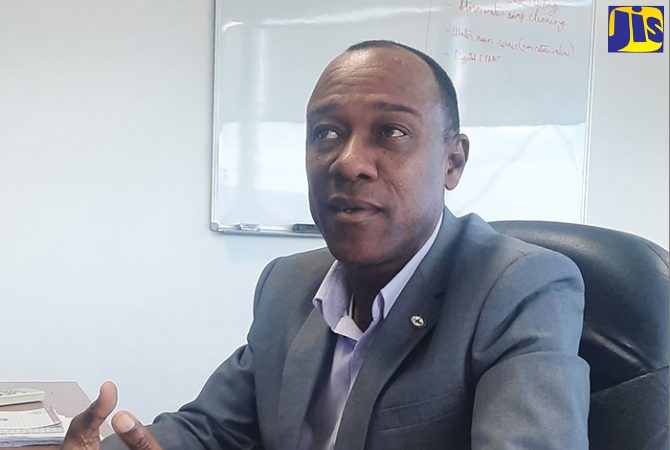
Part 6: The Ministry of Transport & The Transport Authority
NTAG notes that the Transport Authority has already begun to make key and fundamental changes that are in line with NTAGs outlined position. This was clearly outlined by the Managing Director of the Transport Authority, Willard Hylton.
We Are Embracing A New Way Of Issuing Licences, Moving Towards A Market-Driven Situation.
“We are embracing a new way of issuing licences, which is currently done on an open-and-closed basis. We will be moving towards a market-driven situation. Under the new arrangement, it will not matter how many persons apply. If there are too many operators on one route, the market will fix that. If someone applies for a route, they will have 30 days to determine if it is working. If not, they can make the change. You have route taxi associations through which our licensees make their applications. We want to strengthen the ability of those route taxi associations to prepare the drivers and operators for Vision 2030. The Authority is looking at how we can start building out something that represents world-class standards, so these changes are necessary. The improvements being made to the transport sector entails more than just having nice-looking buses but also ensuring proper organisation of all modes of public transportation. Whatever we are doing, it should be comparable to what happens in developed countries, so that’s what we are focusing on right now” Managing Director of the Transport Authority, Willard Hylton
NTAG fully supports these initiatives and is dedicated to working with the Ministry of Transport and the Transport Authority to achieve Vision 2030.
“Time and destiny have placed US the stakeholders as leaders at a very important and transformative intersection of the public transportation sector. We now have an opportunity to finally transform the public transportation sector, using technology and our collective efforts. With our collective and unified leadership and support we can do what previous public and private sector leaders in the past have not been able to do…it’s our time to give our Jamaican people what they truly deserve and for US to leave a lasting legacy.” NTAG
I Know WE Can Get It Done!
2022-2030
We Need All Public And Private Sector Stakeholders And Policy Makers Onboard In The Same Room Around The Same Table To Get It Done
The Clock Is Ticking.
Vision 2030 Jamaica – National Development Plan (Extracts)
In 2006, the Government of Jamaica (GOJ) mandated the Planning Institute of Jamaica (PIOJ) to lead the preparation of a comprehensive long-term National Development Plan (NDP) which would place Jamaica in a position to achieve developed country status by 2030. Development of the Plan began in January 2007 and thirty-one Task Forces (TFs) including the Transport Task Force were established thereafter. The TFs represent sectors and areas critical to the achievement of the national goals and have been charged with responsibility for developing the relevant long-term sector plans.
The Transport Task Force through three sub-committees, viz., land, air and maritime transport, commenced the plan preparation exercise in April 2007, leading to the completion and submission of a 1st draft report for the long-term development of the transport sector in Jamaica. Following review and stakeholder consultation, and preparation of an action plan for the sector, the Transport Sector Plan for Vision 2030 Jamaica was completed in 2009.
This Sector Plan for Transport is one of the strategic priority areas of the Vision 2030 Jamaica – National Development Plan. It is one of thirty-one sector plans that form the foundation for Vision 2030 Jamaica – a 21-year plan based on a fundamental vision to make ‘Jamaica the place of choice to live, work, raise families, and do business,’ and on guiding principles which put the Jamaican people at the centre of the nation’s transformation.
Extensive and high-quality infrastructure is considered a pillar of international competitiveness that: enables the efficient functioning of markets for goods, services and labour; increases the productivity of economic processes; and improves decision-making by entrepreneurs and other economic actors. The Transport Sector Plan for Vision 2030 Jamaica will ensure the development of world-class transport infrastructure and services that contribute to the competitiveness of our producers and improved quality of life for our people.
The preparation of the Plan was supported by a quantitative systems dynamics computer model – Threshold 21 Jamaica (T21 Jamaica) – which supports comprehensive, integrated planning that enables the consideration of a broad range of interconnected economic, social and environmental factors. The T21 Jamaica model is used to project future consequences of different strategies across a wide range of indicators, and enables planners to trace causes of changes in any variable or indicator back to the relevant assumptions and policy choices.
Road Transportation
Road transportation, being the larger component of land transportation has been affected by the variations in transportation activities in recent years. Road transport includes the road infrastructure, private motor vehicle movement, and the public transport system including buses and licensed public passenger system. Jamaica has one of the densest road networks in the world, with a total of 15,394 kilometres of road. The length of the road network in Jamaica has incurred some changes due to developments such as the realignment of main roads. There was also the addition of thirty-three kilometres (33km) to the road network due to the construction of Highway 2000 (H2K). Traffic volume has been steadily increasing over recent years. This has led to congestion problems in major towns and capitals across the island. Traffic management initiatives have been implemented in the Kingston Metropolitan Transport Region (KMTR) and proposals have been made to address congestion issues in other parishes.
The Half Way Tree Transportation Centre was opened in January 2008. The Centre is a major transport infrastructure project designed as a modern facility with two levels – one level for arriving buses and the other for departing buses. Ultimately it will provide a single-terminus area for all buses traversing the Half-Way-Tree area. Adequate facilities are in place for the commuting public, including a commercial area with a number of shops and kiosks and offices for the JUTC and TA.
Additional Transport Centres are planned for other areas of the island, although these are not directly under the Ministry’s portfolio. The Urban Development Corporation (UDC) is spearheading plans for a Transport centre in Downtown Kingston. Significantly, there are also proposals by Local Government Authorities to construct municipal transportation centres in areas such as Spaldings, Clarendon and Darliston, Westmoreland.
Public Transport
Under the rationalization of the public passenger transport system in the Kingston Metropolitan Region (KMTR), the Metropolitan Management Transport Holdings Ltd. (MMTH) was established in 1995 with responsibility for purchasing buses and building depots and terminal facilities, while the Jamaica Urban Transit Company (JUTC) was established in 1998 to operate the public passenger transportation system that had previously been provided by private operators. In 2008 there were a total of 1,648 buses licensed to operate in or from the KMTR with a total seating capacity of 39,457. In addition, the Montego Bay Metro provides service on three routes with eight buses.
There was a total of 19,075 taxis licensed by the Transport Authority to provide public passenger service islandwide. The importance of the public transport system to road transport in Jamaica is highlighted by the finding of a recent survey that nearly 75% of households do not own a motor vehicle.
Road Master Plan
The government has undertaken the preparation of a Road Master Plan with funding support from the European Union to guide the development and maintenance of the island’s road network over the next ten (10) years. The main provisions of the Road Master Plan include: identification of priority roads in need of periodic maintenance; estimation of preliminary maintenance and construction costs; and recommendations for funding mechanisms. While the Road Master Plan has not yet been formally adopted by the Jamaican government, the Transport Plan for Vision 2030 Jamaica seeks to ensure continuity in long-term planning for land transport in Jamaica by building on the provisions of the Road Master Plan.
“On May 30, 2018, when Minister Montague rose from his seat in Gordon House, it was in a bid to provide alternate strategies for a beleaguered public transportation system with insufficient units to provide reliable transportation for Jamaicans, not only in the Corporate Area, but also in the rural communities, or the nook and cranny of the island. This inadequacy of public transportation had been identified by the auditor general as a contributor to the growth of illegal public transportation in Jamaica. In fact, in a performance audit conducted by the auditor general in October 2017, it was noted that “an inadequate supply of PPVs may have fostered the prevalence of illegal operators”.
https://jamaica-gleaner.com/article/commentary/20191018/transport-ministry-firm-solving-problems-public-sector
You may like
-


Who is Richard Pandohie, Managing Director and Chief Executive Officer (CEO) of Seprod Limited?
-


OMNI Industries Limited’s Successful Listing On The Jamaica Stock Exchange
-


Who is Leesa Kow? Managing Director, JN Bank and Chairman of the Caribbean Association of Banks (CAB)
-


Money Media Kalilah Reynolds Talks to Patrick Kumst Managing Director Omni Industries Limited
-


FosRich Company Reporting Reduced Top And Bottom Line Numbers, As Management Moves To Manage Trade Receivables
-


Maximum Participating Voting Share Capital Of Companies Listed On The Junior Stock Exchange Moving From JA$500 Million To JA$750 Million
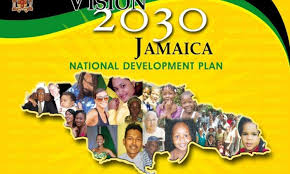
As a Jamaican employed in an organisation, you are worried about the future of our nation. It appears as if our country is stumbling along, barely keeping its head above water. At the same time, you are aware of the power of a corporate vision.
Why hasn’t someone done the same for our 2.8 million people on the island, and the other 2+ million in the Diaspora?
The good news is that something is already in place in the form of Vision 2030. But why isn’t it changing your everyday experience?
The truth is that we need help. The two main things Jamaicans care most about – economy and crime – seem not to have progressed for decades. Instead, we want the hyper-growth of Trinidad-2004 and Guyana-2023. Or maybe even the steady high performance of the Bahamas.
Or perhaps more importantly, we envy the low crime rates of Barbados or Cayman (formerly a Jamaican protectorate.) At some point, we led all these countries in these areas.
Today, we are working hard not to slip into the same zone as Haiti.
If our leading companies can accomplish so much long-term success, why can’t our country, we wonder? While a direct comparison is unfair, maybe there are a few things we can learn from best practices accepted in your organisation.
A Joined Up, Far-Away Future
A “joined-up” future is one that lots of stakeholders contribute to creating. In a company, it means engaging the board, executives, staff, customers, suppliers, regulators, local communities and more.
Shouldn’t our country do the same?
Based on my experience and queries of colleagues outside government…we don’t know that we already have a joined-up faraway future…at least on paper. In fact, the process used to create Vision 2030 Jamaica from 2003-9 is a world-class model. As such, I have shared it at in-person and online strategy conferences as a case study.
Perhaps you recognise the summary statement: “the place of choice to live, work, raise families and do business.” In times gone, it was the tagline of speeches given by the Governor General, Prime Minister, Leader of the Opposition and many others.
But I looked over the recent Budget Debate notes. I struggled to find much of a mention. A Google search didn’t help. Here are a few ways business people at all levels could intervene now to prevent what former leaders of our country seem to be telling us…this is too important to allow it to be eaten up in regular chakka-chakka.
Why the urgency?
With six or so years remaining until we cross the finish line in 2030, we can’t afford to waste a single moment in mid-race. Remember when Miller-Uibo glanced up at the screen and lost her lead in the 400m final of the 2017 World Championships? We are likely to stumble into defeat also as a nation, unless we pay attention to the following.
A Divisive Election – You and I watch the bitter combat underway in the USA. It appears that cooperation towards common goals is impossible. Within a year, our political parties will try to win the next election by emphasising their differences. This is natural. But it’s the opposite of the intent of Vision 2030 Jamaica. Just imagine if the board of your company were divided into opposing camps. Let’s intervene so that their attention remains on what is most important.
Continuous Inspiration – Your ability to recite our National Pledge and Anthem were picked up as a child. We could elevate Vision 2030 Jamaica to that level of importance, starting with the Forward by Dr. Wesley Hughes, which states in part:
“Today, our children, from the tiny boy in Aboukir, St. Ann, to the teenage girl in Cave, Westmoreland, have access to technologies that were once considered science fiction. They seek opportunities to realise their full potential. This Plan (vision) is to ensure that, as a society, we do not fail them. “
Updated Business-like Measures – How can we know the progress we have made from 2009-2023? Are the measurable results listed in the document beyond reach? Do we deserve an A-? or a D+?
How about fresh, intuitive measures of success which tell us whether or not Jamaica is becoming “the place of choice”? Let’s measure the length of lines outside the US and Canadian Embassies for those seeking permanent residency and how they are growing or shrinking.
Wheeling and Coming Again – Companies have no problem resetting fresh objectives when the old ones no longer do the job. In business, a strategy that is not working is replaced as soon as it’s found to be lacking.
We can do the same for Vision 2030 Jamaica to keep it relevant. This is the beauty of long-term strategic planning.
An honest read of the original document reveals that certain assumptions about the government’s capacity to lead the effort were unquestioned. Today, after over a decade of effort, we have learned much. For example, it’s hard to argue that the planning done in 2009 was enough.
While we once led the world in long-term national planning, we aren’t doing the same in the more difficult world of national strategizing and execution. But there’s time.
As the clock ticks down to 2030, things are likely to become more awkward for all of us. As you may imagine,. the human tendency is to avoid the issue entirely, hoping it goes away.
That may yet happen. But if we don’t confront the gaps in our initial attempt to create a joined-up, faraway vision, we’ll block our citizens from ever believing in a national vision again.
In fact, it would be better if it were declared null and void, than ignored. At least that would have some integrity and enable us to move on to a better national vision, lessons earned.
Better National Strategic Planning
And that is perhaps the biggest lesson for all concerned. We Jamaicans say that we are great starters, but poor finishers. In other words, we know how to kick things off. But when the going gets tough, we aren’t strong at bringing them to fruition.
Said differently, we don’t know how to keep promises just because we made them.
The point here is that Vision 2030, with some five to six years remaining, puts us in an awkward spot. But that’s a lie. We have put ourselves in an awkward spot.
At some point we were strong in envisioning great things. Like a company who creates BHAGs, our executive team gave its sacred honor to accomplish a great thing, like the framers of the Declaration of Independence.
However, we haven’t put in place mechanisms sufficient to rescue our current situation. At the current rate, we won’t be closer to being a “place of choice” than we were in 2009.
In a company it’s easier to find individuals or a team of leaders who may hold themselves accountable for a game-changing result. Often, the metrics are clear.
Unfortunately, no such clarity exists around Vision 2030. And given our impending election fever, it may not come from politicians. Instead, it’s time for business to step up and bring sound strategic planning to the accomplishment of the most important outcomes of our national lifetimes.
Let’s inspire each other to intervene so we can have what we already
know we want. It won’t happen any other way.
 Francis Wade is the founder of the Jump Leap Long-Term Strategy newsletter and podcast, and operates a management consulting firm.
Francis Wade is the founder of the Jump Leap Long-Term Strategy newsletter and podcast, and operates a management consulting firm.
Jamaica Vision 2030
Part 5: Inability To Attract And Retain Suitable and Qualified Drivers And Conductors – To Achieve Vision 2030 For The Public Transportation Sector A New Business Model Is Needed Now…NTAG
Published
2 years agoon
September 16, 2022
Part 5: Drivers And Conductors – Inability To Attract And Retain Suitable and Qualified Drivers And Conductors.
In his budget presentation on Tuesday, march 8, 2022 Nigel Clarke Minister of Finance and the Public Service spoke of the “Inability To Attract And Retain Talent In The Public Sector. It is generally agreed that public sector compensation is not competitive. Public sector compensation, as currently constructed, hinders the Government’s ability to attract and retain talent in the public sector. Those who serve in the public sector do so mainly out of service to country and you will hear the comments from time to time that they are subsidizing government operations. In this regard, trade unions have been advocating for decades for better wages and conditions for public sector workers.”
The Public Transportation sector is also facing a similar dilemma, that of the Inability To Attract And Retain Suitable and Qualified Drivers And Conductors.
“I am focusing on eliminating indiscipline in the transport sector and restoring the railway system. The public transportation system is critical for productivity, and when workers utilise the vehicles they should enter work feeling motivated, and operators in the sector must accept the responsibility that is required from them. We are going to lift our standards in this country, treating people with respect, treating them like human beings, and when they end up at work they feel happy and end up being more productive. Commuters must be able to travel in comfort, and that work will be done to reposition the Jamaica Urban Transit Company (JUTC), as the public transport system is central for students and workers.”
Hon. Audley Shaw Minister of Transport and Mining

As far as NTAG is concerned, and the vast majority of investors in the sector agree, the quality of the available pool of talent from which the sector sources human resources for these roles is grossly inadequate and in need of immediate overhauling. Addressing longstanding issues of job security, working conditions, equity, uneven application of increases, and inadequate salaries is an immediate and urgent priority of NTAG.
One thing Drivers and Conductors in the Public Transportation Sector all have in common is that they all believe that they are not adequately or fairly compensated.
This is a problem.
A vast majority of the public will tell you that they are dissatisfied with the level of public transportation service they receive.
This is also a problem.
Both these problems are related and as a sector we have to address BOTH problems and that is what NTAG proposes to do as part of its vision 2030 plan.
Transport operators who ply sections of St Andrew West Rural withdrew their services on Monday, leaving students and commuters stranded in Half-Way Tree, Stony Hill and other areas. Poor road conditions, seized buses and a demand for fare increase have been cited among the reasons for the strike action.”
Currently drivers and conductors are considered to be independent contractors, as they can choose when, where and how often they work. However, in exchange, they have no job security, vacation pay or other benefits such as pension and health insurance for themselves and family members.
This must change!
NTAG proposes as part of its vision 2030 plan that all registered companies operating in the public transportation sector, as a part of their key strategy execution, must ensure that all independent contractors and operators working in their company have the option and opportunity for job security, vacation pay and other benefits such as pension and health insurance for themselves and family members. This includes payroll payments on a weekly or every two-week basis to allow for accumulated income allowing for better allocation of income for saving, investments, statutory payments and importantly a pay slip. A pay slip provides proof of consistent income allowing for loan applications and other financial requirements.
NTAG will play a major role in ensuring that standards of entry are maintained at a suitable level, and that appropriate training opportunies are always available.
A key feature of this is a project NTAG is working on to develop a cloud based National Transporter Database of Driver and Conductors.
Problem Definition: There is said to be over 200,000 Available Independent Drivers of Public Passenger And Commercial Vehicles who do not own their own vehicle, and will drive for Stakeholders – Investor, Owner And Operator.
However, there is no National Central Addressable And Available Database that can be accessed by these and other stakeholders to view suitable candidates for employment and engagement. In addition, there is no way to reliably determine the work history, experience and expertise of these drivers, and so engagement is often a hit and miss situation. The vast majority of these drivers are transient in that they are not stable in their employment and are known to frequently move around, driving for different investors, owners and operators.
Proposed Solution: The creation of a NTAG National Central Addressable And Available Database that can be accessed by these stakeholders to view suitable candidates for employment and engagement.
A Bulletin Board will also be incorporated allowing Investor, Owner And Operator to post available positions and for Available Independent Drivers to view and apply.
Stakeholders:
National Transporters Alliance Group: Owners and operators of the proposed National Central Addressable And Available Database and responsible for vetting and uploading Available Independent Drivers into the system.
Available Independent Drivers and Conductors: who will apply and have their relevant information uploaded to the database, and pay an annual fee to maintain listing. They will also be able to access and view ONLY their records and file in the database, ratings, comments and recommendations from Investor, Owner And Operator. Ratings and comments from other parties such as passengers and customers should also be available.
Investor, Owner And Operator: These individuals or companies own and operate a single vehicle or a fleet of vehicles, and are seeking to engage Available Independent Drivers. They will apply and have their relevant information uploaded to the database, and pay an annual fee to maintain their listing, and will be able to access and view ONLY their records and file in the database, ratings, comments and recommendations from Available Independent Driver and Conductors. They will NOT have access to another Investor, Owner And Operator information in the database.
They will be able to access and view all Available Independent Driver and Conductors with a limited view of the records and files in the database, ratings, comments and recommendations. Ratings and comments from other parties such as passengers and customers should also be available.
Available Independent Drivers should be able to view limited information on these stakeholders to determine for themselves the suitability of these individuals as employers.
Information and Data Capture: This can begin during the NTAG membership onboarding process as the same information will be required.
Next Part 6: The Ministry of Transport & The Transport Authority
Jamaica Vision 2030
Next Part 4: Emancipate Investors and Owners – To Achieve Vision 2030 For The Public Transportation Sector A New Business Model Is Needed Now…NTAG
Published
2 years agoon
September 15, 2022
Investors and Owners
The Vision 2030 Jamaica – National Development Plan identifies extensive and high-quality infrastructure as a pillar of international competitiveness that: enables the efficient functioning of markets for goods, services and labour; increases the productivity of economic processes; and improves decision-making by entrepreneurs and other economic actors.
The returns to investment in physical infrastructure tend to be high in countries at Jamaica’s income level, especially considering the relative underinvestment in physical infrastructure in recent decades. These higher growth rates eventually increase the size of the economy and the levels of funding available for other services such as health and education over the medium and long term. High-quality infrastructure contributes to social and environmental goals, by improving access to public services, reducing negative environmental impacts and supporting the sustainable use of natural resources.
NTAG’s position is that if the Transport Sector Plan for Vision 2030 Jamaica is going to ensure the development of world-class transport infrastructure and services that contribute to the competitiveness of our producers and improved quality of life for our people, then it must provide for and facilities an environment for entrepreneurs to invest with a reasonable expectation for a return on their investment.
These entrepreneurs according to NTAG covers Investors and Owners in the Public and Commercial Transportation Sector operating as or through Registered Limited Liability Companies as license holders incorporating all classes of road licenses.
NTAG’s position is that as a private sector group of individual investors and operators all the changes it has outlined so far will allow for among other things the following:
1. More Investment: To achieve the 2030 goal and vision significantly more investment will have to be made to build out a modern and efficient fleet of vehicles, supported by a team of well-trained and compensated drivers and conductors.
Allowing investors to structure their business in a way that would facilitate accessing funding via the stock market will be a key driver for investment and funding to facilitate and accelerate growth.
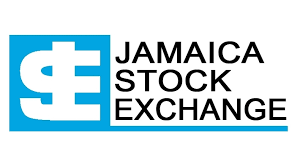
2. ESOP: Allowing all stakeholders in the sector an opportunity to secure a stake in the profitable growth of the sector will allow for greater alignment of interest. NTAG wants to see drivers and conductors offered opportunies to invest by way of equity participation in the companies they are working and contributing to.
3. Transportation Centers: Importantly the Public and Private Transportation Sector will work with the Government in a Public Private Partnership to build out and operate suitable located Transportation Centers. There is clear mutual benefit in this.
“A major part of the problem is that the Transport Authority is issuing licenses and not regulating with any vision. There are some 4000 to 5000 public passenger vehicles terminating in Montego bay daily, but the terminal centre does not even have the capacity for 700 units. The failure of the authorities to establish adequate facilities and control the influx of unregulated or robot taxis in the system have resulted in parking violations and a continuous cat and mouse game with the Police and Transport Authority officers. This fuels allegations of corruption against members of both state entities, who are seen as enablers of the chaos on the roadway. The facilities provided are woefully inadequate based on the number of vehicles operating in the parish and the enforcement is weak. The routes currently terminate anywhere in the city and unless we have a proper transportation system it will never be solved.” Deon Chance, President St. James Taxi Association.
According to the Vision 2030 Jamaica – National Development Plan additional transport centres are planned for other areas of the island, although these are not directly under the Ministry’s portfolio. The Urban Development Corporation (UDC) is spearheading plans for a Transport centre in Downtown Kingston. Significantly, there are also proposals by Local Government Authorities to construct municipal transportation centres in areas such as Spaldings, Clarendon and Darliston, Westmoreland.
4. Professionalization of the sector: Making public transportation more acceptable as a viable career choice and helping younger people make a success of the public transport trade is key to NTAG’s vison for 2030. Supporting the development of new ideas, and celebrating achievements by Transporters is also crucial to this development.
“I see a public transportation system where the players in the industry will understand that this is not just a means to ‘eat a food’. It is a business that we are delivering and we must be able to provide the highest standard of public transportation.”
Willard Hylton Managing Director Transport Authority
5. Routes: NTAG’s view is that while routes will continue to be determined by the Transport Authority based on national population requirements, entrepreneurs and investors will be able to apply for other routes they would like to operate on. Routes should not be exclusive, allowing more than one company to operate on the route. This allows for healthy competition and importantly provides the public with real choice in transportation services islandwide.
7. Fare Structure: To ensure an open free market with fares, NTAG believes operators should offer clearly differentiated services so as not to charge the same fare on the same route. Fares must be noticeable and distinctly different.
Different route prices will be encouraged by NTAG, encouraging investors to establish and operate differentiated services in support of price differences. This will allow the consumer to have choices and for operators to compete on service and customer satisfaction.
Importantly NTAG sees the system of differenced route prices as a self-check mechanism that will encourage competition and discourage price fixing and collusion in price setting.
8. Application for routes:
Taxi Associations: There is a widespread view within the sector that the vast majority of the current taxi associations are not delivering the expected value and type of services intended.
The Transport Authority engages and uses the over 30 route taxi associations islandwide to help manage the annual renewal and application for new operating road licences. The Associations as member organsions are to also provide other member services and benefits, which drivers and conductors claims many do not do.
As such NTAG is proposing that the current association system be replaced to one using technology and registered limited liability companies, with board-based ownerships in the form of shareholdings from its members.
Transport Authority will therefore monitor and regulate the sector through Registered Limited Liability Companies and would allow for applications to be submitted and processed online digitally.
Registered Limited Liability Companies will be able to apply to the Transport Authority for operators licenses for Passenger Services only or Passenger and Courier Services, to be used and deployed as its business model and plan dictates.
Individual Owners, Operators and investors not operating as a registered company will continue to apply to the Transport Authority for individual operator’s license for Passenger Services only or Passenger and Courier Services. This can either be submitted and processed online digitally on an individual basis or through a registered limited liability company.
These individual Owners, Operators, and investors with a valid license in hand can now choose to work with a registered limited liability company that best suits their requirements. Terms and conditions to be agreed between the parties.
Next Part 5: Drivers And Conductors – Inability To Attract And Retain Suitable and Qualified Drivers And Conductors.
Jamaica Vision 2030
Part 3: The Jamaican People Deserves Better – To Achieve Vision 2030 For The Public Transportation Sector A New Business Model Is Needed Now…NTAG
Published
2 years agoon
September 14, 2022
Part 3: The Key Stakeholders Required To Make This Plan Work
The Jamaican People
The vast majority of the public will tell you that they are dissatisfied with the level of public transportation customer service and experience they receive, and for NTAG this is also a problem that must be fixed if the sector is to grow and fulfil its mandate to the Jamaican people.
“We need to quit treating transportation subsidies as a drain on public funds and instead view them as strategic investments that generate huge social, economic, and environmental returns. If one public service [could] be said to symbolise the frustration driving social unrest, it [was] public transportation”.
Alberto Moreno, former president of the Inter-American Development Bank (IDB)
This public dissatisfaction with the low and poor customer experience in the public transportation sector has led NTAG to establish a clear position and mandate that “Every Jamaican Deserves To Have Access To A Modern Tech Driven Public Transportation Service That Is Safe, Comfortable, Cost Effective, Efficient And Reliable.”
“The more efficient the public transportation becomes is the more efficient workers become; they reach work on time. They do not have to spend two hours or maybe 30 minutes in traffic”
Dr. Lawrence Nicholson The University Of The West Indies
The 2030 Vision as envisioned by NTAG embraces three key elements:
Technology: will significantly improve efficiency within the sector and allow for a more seamless distribution and access to information and service via the smartphone.
A Cashless System: will provide higher levels of security for the Transporters, who are now forced to carry around large wads of cash on a daily basis, making them targets for criminals. This will also allow passengers and customers to conduct transactions via their smartphones and reduce the need to walk with cash.
Scheduled Times: will allow passengers and customers to better plan their departure and arrival times for both business and personal matters with No More Squeeze Up, and On Time Departures. On the courier side this will allow for increased timely and organised delivery schedules.
A week after the Jamaica Urban Transit Company (JUTC) announced that it had repaired nearly 100 buses for the new academic year, commuters said they are still baffled with the lengthy wait times to get to their destinations.
“I have only seen two buses in the 30 minutes and they are coming packed. I brought my daughter to school this morning from 5:00, on the number 16 in Portmore. I am trying to go back home but no JUTC. Anything I can get right now, I will take,”
“A bus should leave town about 7:15 am but I am not seeing that bus. Normally, what I have to do is come out earlier and catch the 6:30 bus because after that you don’t get another bus until 8:30 am. This has been the case from summer — but it is worse now,”
“About an hour now, no bus nuh come. Every week is the same problem. From it reach certain hours — 9:00 am, 10:00 am, or even 1:00 pm, yuh suffer fi get a bus. Sometimes when mi out here mi haffi turn round back, cyaan get no bus and cancel my plans because the time pass; mi cyaan go again,”
The 2030 Vision is also supported by the following 7 Minimum Service Levels For The Customer And Passengers.
1. Availability:
In this world of 24-7 activity, the acceptable availability standard has been raised.
Customers expect information and service at their fingertips; when they need it and
where they need it.
2. Courtesy:
In creating amazing customer experiences, courtesy goes far beyond having nice manners and smiling. There is courtesy in the way our Transporters behave that yes, includes the observable traits of pleasant tone, nice words, welcoming and friendly
body language, high levels of personal hygiene, dress code and appearance and importantly a clean vehicle among other things.
3. Consistency:
Customers appreciate consistency in service and services. This poses a challenge
when Transporters go out of their way or bend a policy to please a customer.
4. Accuracy:
Providing and communicating correct information to customers is imperative to deliver at least the minimum level of service. Customers and passengers will make decisions and act upon the information they receive, and receiving inaccurate information could potentially make a customer go down a very wrong and inefficient
path…leading to poor customer experiences.
5. Responsiveness:
Readily reacting to customers and passengers in a timely manner to their needs or requests, and consistently communicating progress of this request is very important to them. No one wants their requests to go into an abyss, void of communication or acknowledgement.
6. Efficiency:
The efficient use of resources whether it be human, financial, time, etc. will inevitably lead to delivering great service to our customers’ and passengers.
7. Safety and Security:
Peace of mind is very important to our customers’ and passengers, and so they expect at all times to Experience Safe, Comfortable, Economical, Efficient & Reliable Service.

NTAG will ensure that all Transporters go through an Introduction and Familiarization session before joining the team as a Transporter. The sessions cover the role and responsibility of the Transporter to the passenger, how to use the Smartphone and Application, customer service and expectations, and basic business skills among other things. All relevant documents must be submitted and be approved by NTAG in order to make the Driver Active as a Transporter.
Next Part 4: The Key Stakeholders Required To Make This Plan Work – Investors and Owners
Jamaica Vision 2030
Part 2: Public Transportation Sector Cannot Survive On One Foot – To Achieve Vision 2030 For The Public Transportation Sector A New Business Model Is Needed Now…NTAG
Published
2 years agoon
September 13, 2022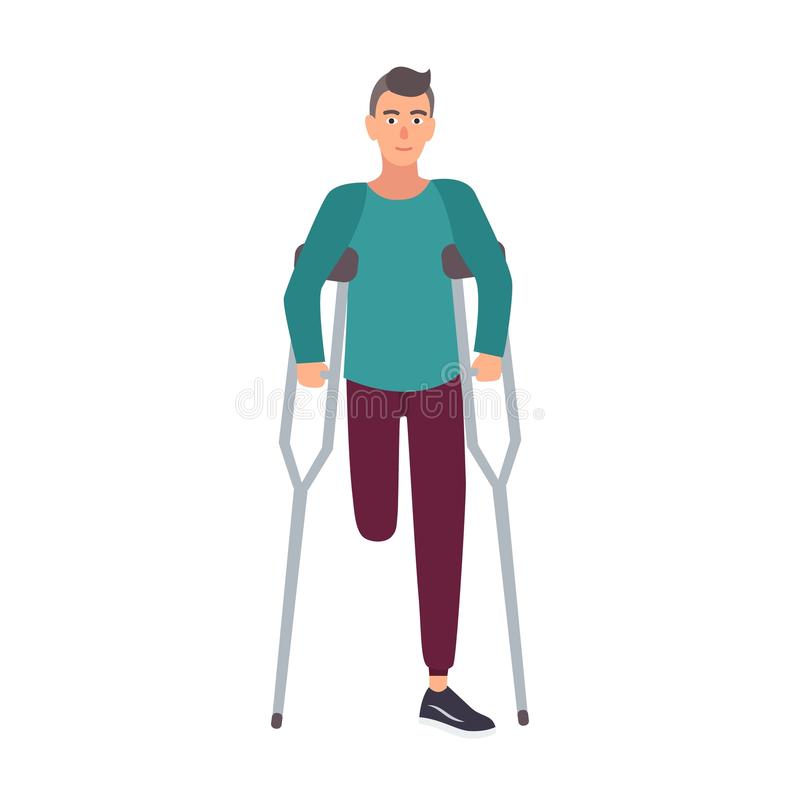
Part 2 Public Transportation Sector Cannot Survive On One Foot!
NTAG takes the firm position that the public transportation sector cannot survive on one foot! i.e. passenger fares. This as one means it will always need support to stand-up strong and independent.
NTAG’s view and a key feature of its Vision 2030 plan is that the public transportation sector can survive on two feet! One that combines the opportunity to derive income from passenger fares and courier services. According to NTAG multiple revenue streams will allow for a more profitable transportation sector, and relieve it of the need to frequently seek and require government support to stand-up strong and independent.
“A taxi owner is a business operator, so in applying for the fare increase the operators submitted their income and expenditure statements, which indicate they are operating at a loss. Bear in mind all our overhead expenses are pegged to the US dollar, and I don’t need to tell you about the devaluation of our dollar right now. Every single week we go to the pumps we pay an increase in fuel costs. We have to fit [fitness certification] our vehicles twice per year, unlike a private vehicle operator who only has to do it once per year. We have to do it twice to ensure our vehicle is fit and roadworthy to carry passengers. Our insurance costs triple or sometimes quadruple what private insurers pay. Where do we get the money from to pay for all these expenses? We have to service our vehicles regularly. Where do we get the money? It’s the fare that we charge, that is our income, that is our revenue.”
Sophia Campbell Head Route Taxi Association of Jamaica
Importantly, and a point which should be of significant interest to the Minister of Transport and the Minister of finance is NTAG’s argument that this will alleviate the frequent calls for fare increases. With the opportunity for increased income from multiple revenue streams from Rides and Delivery services, calls for fare increases can be tempered or even eliminated, removing the political pressure. This political pressure to fix and control fares is at the core of the problem plaguing the sector NTAG argues.
“Meanwhile, taxi operators, who it is said are providing the subsidy that the Government fails to in order to better meet the demands of its creditors, are clamouring for a fare increase. Enter Uber and the competition has tightened. But the Government is in a deep dark hole of policy failure. Any massive increase in bus and taxi fares will bring undue additional hardships on poor people, cause the “independent” Bank of Jamaica (BOJ) to miss its inflation target, be damaging to the economy, could result in social unrest, and could be politically disastrous. Taxi drivers knowing that badness pays are flexing their muscles.”
Audley Rodriques has served as Jamaican ambassador to South Africa, Kuwait, and Venezuela.
https://www.jamaicaobserver.com/columns/inequality-and-the-public-transportation-system/
The introduction of technology to better manage underutilized space and capacity to increase income and efficiency can yield significant national and individual financial benefits, resulting in lower prices to the Jamaican people the NTAG plan argues.
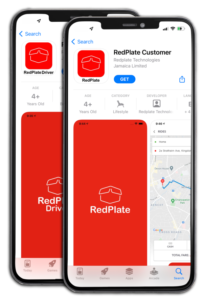
The NTAG plan also points out that the public transportation sector can play a far more significant and strategic role in the economic and commercial development of Jamaica, and is grossly underutilised asset. The public transportation sector, NTAG argues, can accelerate economic development by offering same day delivery to homes and places of business, allowing brick and mortar stores and ecommerce websites to offer this service to their customers. This has the effect of reducing the cost of delivery, resulting in lower prices of goods and services.
The NTAG 2030 National Transportation Business Model seeks to incorporate and integrate into a national logistics transportation and delivery solution.
The public transportation sector can be easily integrated into what NTAG describes as the RedPlate National Logistics Transportation and Delivery Solution, capitalizing on the vast amounts of underutilized space and capacity in both public transportation and commercial vehicles, allowing for more diverse income streams, that are more profitable than even carrying passengers.
The proposed RedPlate National Logistics Transportation and Delivery Solution incorporates all forms of public and commercial transportation including Rural Stage Carriages/Urban Stage Carriages/ Route Taxis/ Express Carriages/ Hackney / Contract Carriages & Commercial Carriage (green plates).
![]()
The RedPlate National Logistics Transportation and Delivery Solution will be operating through Five (5) Main Connection Hubs located in Kingston, Ocho Rios, Mandeville, Savanna-La-Mar and Montego Bay with daily time scheduled routes. Members of the public and business owners operating online or offline will have the opportunity to offer same delivery to anywhere in the island based on set departure and estimated arrival times.
The service will also operate through strategic pickup and drop off locations such as Service Stations on main roads, which may be farther from town centers, providing other RedPlate Rides with connecting revenue opportunities.

According to NTAG multiple revenue streams will allow for a more profitable transportation sector, and relieve it of the need to frequently seek and require government support to stand-up strong and independent.
The National Transportation Alliance Group Limited (NTAG) is already in advanced discussions with the Transport Authority for a special operating license to allow both Hackney and Route taxis to formally and legally carry third party packages and cargo. This is not currently allowed under the current licence arrangements.
Access to these updated or new licensees to allow for this multiple revenue streams, supported by changes in Government policy will be required immediately.
Part 3: The Key Stakeholders Required To Make This Plan Work

AMK Communications Pioneers AI-Generated Advertising Campaign for InterMetroONE

Image Plus Consultants Implementing Strategies To Grow Scan Count To Improve Revenue Performance.

One Academy Solution Contributed Significantly To One On One Educational Services’ Performance For 3rd Quarter But Ended Nine-Month Period With Net Loss Of J$17.3M
Which Company Has The More Sustainable Business Model….Edufocal or ICREATE and Why?

Businessuite 2023 Top 100 Caribbean Companies – US$ Revenue

Will Oliver Mcintosh’s Verticast Media Group Acquire CVM TV From Michael Lee Chin? Part 1
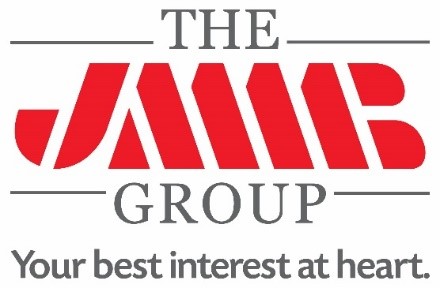
JMMB Group Limited Investor Briefing – November 16, 2023

Jeffrey Hall Is Set To Be One Of The Most Powerful Men In Corporate Jamaica And The Caribbean. So, Who Is He?

A conversation with Marcel Anderson Group Chief Executive Officer and CTO at KYO Group on the disruption they are bringing to International Fast Cargo Transportation from the United States to Jamaica.

Trending
-

 Feedback & What You Think2 years ago
Feedback & What You Think2 years agoWhich Company Has The More Sustainable Business Model….Edufocal or ICREATE and Why?
-

 RANKING10 months ago
RANKING10 months agoBusinessuite 2023 Top 100 Caribbean Companies – US$ Revenue
-

 Marketing & Advertising2 years ago
Marketing & Advertising2 years agoWill Oliver Mcintosh’s Verticast Media Group Acquire CVM TV From Michael Lee Chin? Part 1
-

 Entrepreneurship2 years ago
Entrepreneurship2 years agoJeffrey Hall Is Set To Be One Of The Most Powerful Men In Corporate Jamaica And The Caribbean. So, Who Is He?
-

 Businessuite Women2 years ago
Businessuite Women2 years agoJoanna A. Banks Was Set To Become The Youngest And Most Powerful Woman In Corporate Jamaica And The Caribbean
-

 Businessuite 50 Power and Influence1 year ago
Businessuite 50 Power and Influence1 year agoBusinessuite Women- Power and Influence 50 For 2023
-

 Businessuite Markets2 years ago
Businessuite Markets2 years agoWhat Does Seprod’s Acquisition of Trinidad Based A.S. Bryden Have to Do with CEO Richard Pandohie’s Single Domestic Market Strategy?….Part 1
-

 RANKING3 years ago
RANKING3 years agoBusinessuite 2021 Top 100 Caribbean Companies – US$ Revenue

